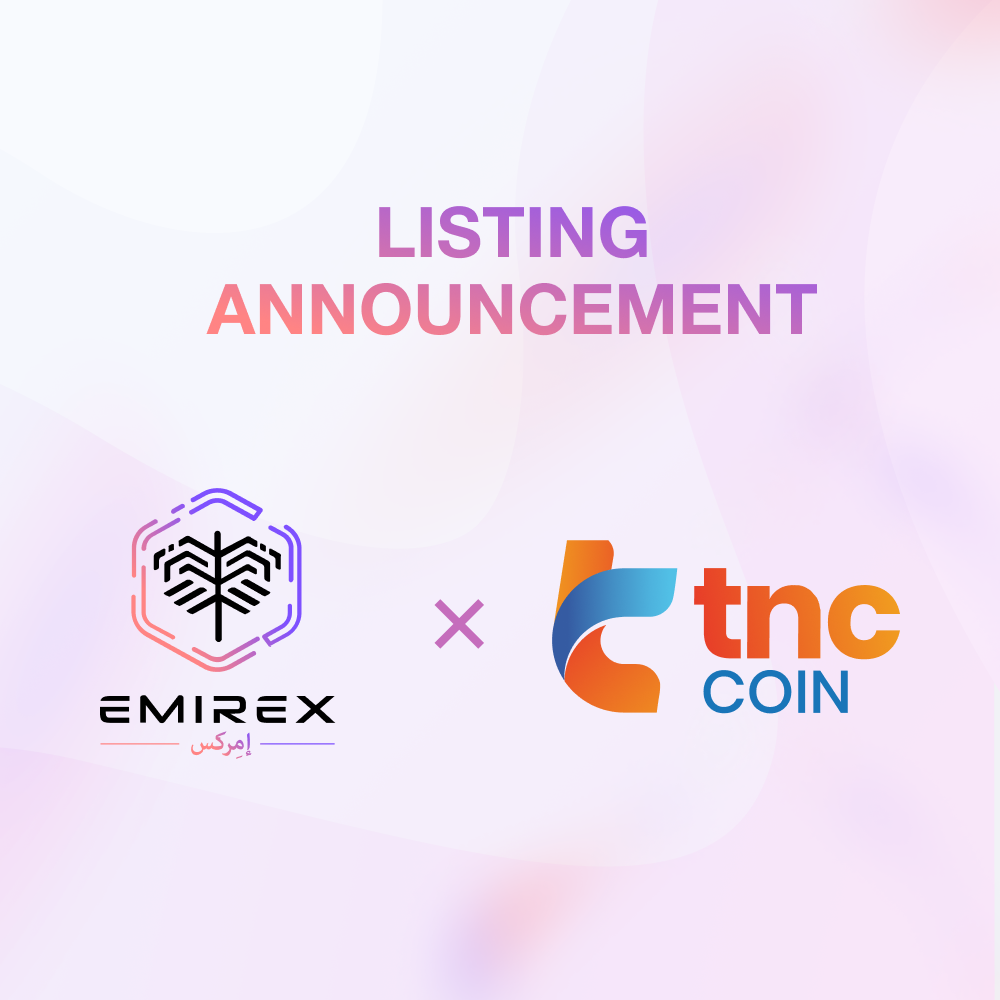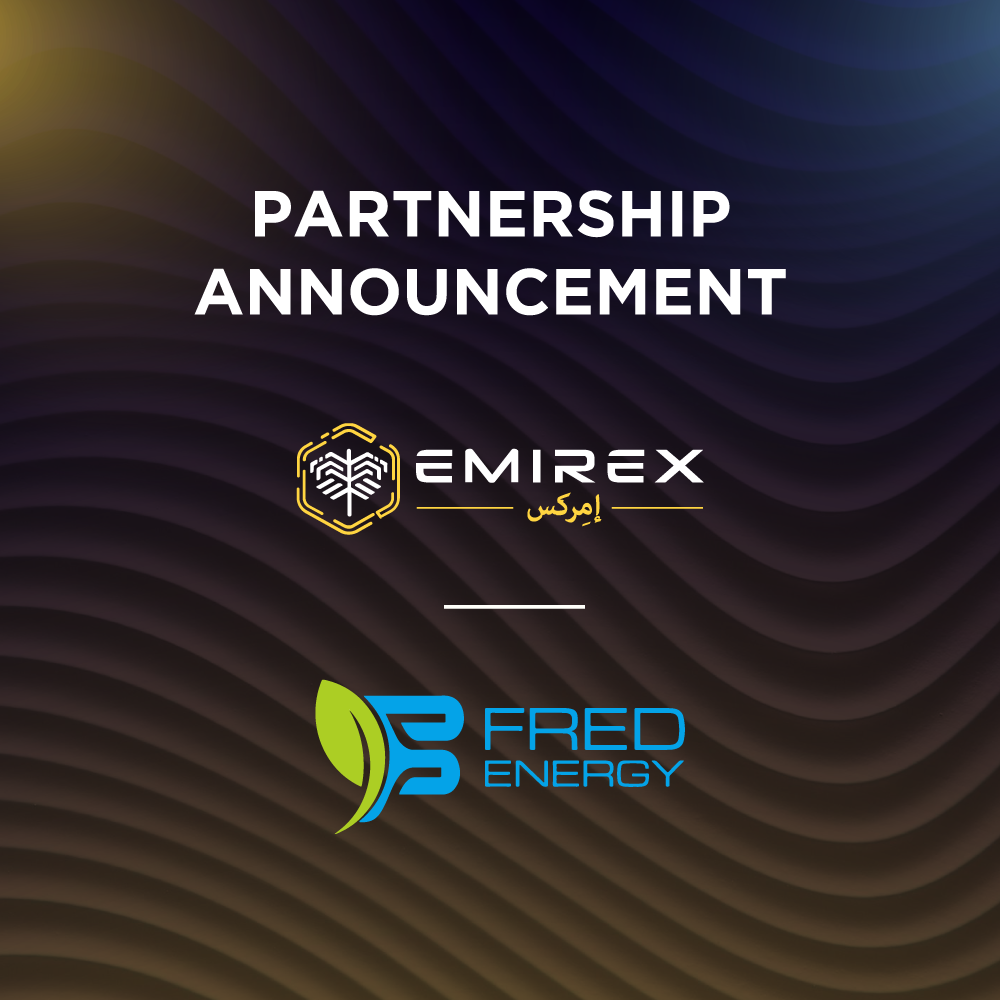Loopring (LRC) is a zkRollup Exchange and Payment Protocol. On 17th September, Loopring was listed for trading on the Emirex exchange.
Current available trading pair on the Emirex exchange: LRC/USDT, LRC/BTC
- Loopring is a decentralized exchange protocol allowing anyone to build high-throughput, non-custodial, orderbook-based exchanges on Ethereum by leveraging Zero-Knowledge Proofs.
- Loopring 3.0 is the latest iteration of the protocol, bringing much better performance without a tradeoff in security. With Loopring 3.0 and OCDA enabled as many as 2,025 trades per second can be settled.
- All LRC holders can stake LRC to earn part of the protocol fees paid by all exchanges built on top of Loopring. Loopring DEX owners must stake some LRC for economic security and building their reputation.
CryptoCurrency Profile
- Token Standard - ERC-20
- Loopring Price - $0,180058 USD
- Loopring ROI - 260,12%
- Market Rank - #62
- Market Cap - $205 976 095 USD
- 24 Hour Volume - $74 403 378 USD
- Circulating Supply - 1 143 941 524 LRC
- Total Supply - 1 374 513 897 LRC
- All Time High - $2,59 USD (Jan 09, 2018)
- All Time Low - $0,019861 USD (Dec 18, 2019)
About Project
Loopring (LRC) - is an open-source decentralized digital currency protocol with an automated execution system on Ethereum. It is created to allow users to exchange assets across various exchanges. Loopring isn’t a decentralized exchange by itself but instead, it uses order matching and ring-sharing technologies. The project seeks to pool orders from as many exchanges as possible, and then fill these orders by matching them with the order books of all the exchanges that participate in the Loopring network.
Loopring is a protocol that facilitates the decentralized exchange of ERC20 tokens on the Ethereum blockchain. Loopring allows the exchange of multiple tokens as well as the liquidation of the exchange for the blockchain under different circumstances. It offers benefits to both users and exchanges by deferring risk from both parties in decentralized smart contracts, minimizing fees and costs to create more profitable orders through ring matching and order allocation, and as a cross-platform protocol. Any platform that has smart contracts implemented will be able to integrate with Loopring.
The Loopring Foundation has released four major versions of the Loopring protocol, each of which has included new/changed/removed features:
Loopring 1.0
- Ring-Matching
- Order-Sharing
- Non-Custodial
Loopring 1.5
- Ring-Matching
- Order-Sharing
- Non-Custodial
- Dual-Authoring
Loopring 2.0
- Ring-Matching
- Order-Sharing
- Non-Custodial
- Dual-Authoring
- Any-Token-as-Fee
- LRC-Burning
Loopring 3.0
- Non-Custodial
- LRC-Burning
- Trade-Token-as-Fee
- zkRollup
- LRC-Staking
- High-Throughput
- Low-Cost
- Upgradability
Loopring 3.0
Loopring 3.0 is the latest iteration of the protocol, bringing much better performance without a tradeoff in security. It was designed with two major objectives in mind – performance and security. It ensures that users are always able to withdraw their capital, no matter what happens.
Even in the worst-case scenarios, users can withdraw their capital using Merkle Proofs generated from on-chain data, so long as On-Chain Data Availablity is enabled. This avoids the need to trust any central party or ask for help in recovering assets.
Loopring 3.0 has migrated most computations off-chain, significantly improving throughput and costs. User account balances and transaction history are all organized off-chain in a Quad-Merkle Tree. All user transactions and requests are batched and processed in large batches off-chain with the state root after each batch process is then published to the blockchain. This allows for the re-construction and verification of state roots.
With Loopring 3.0 and OCDA enabled as many as 2,025 trades per second can be settled. If OCDA is disabled, which also results in security being relegated to the consortium which maintains the data, throughput is increased to 16,400 trades per second.
LRC token
LRC is the token used on the Loopring protocol to earn a percentage of all the fees from the exchanges built on top of Loopring. 70% of the fees are rewarded to stakers, 20% will be used to fund the Loopring DAO, and the remaining 10% will be burned.
The vital role the LRC token will play is being used for the Loopring reputation system. The DEX owners on Loopring are required to stake LRC to build their reputation and provide economic security for their users. This means malicious DEX’s will lose a portion of their stake if they act bad and this provides users with insurance. Traders are advised to use exchanges with a high collateralized stake.
Another incentive for exchanges to stake LRC is to lower their protocol fees. The more LRC an exchange stakes, the fewer fees they pay. Traders can also stake their LRC to lower their protocol fees on the platform.
Recent News
- Jul 2020: Listed renBTC, BZRX, and GRID;
- 21 Jul 2020: Loopring AMA with Asia Blockchain Community (ABC);
- Aug 2020: Monthly Update: Released Loopring Wallet’s smart contract v1.1 and started the app’s UX/UI redesign
- 16 Sep 2020: Integration of Loopring Exchange Into NIOX Market Making Software;
- 18 Sep 2020: LRC was listed on Coinbase;
- 24 Sep 2020: Launched three new liquidity mining campaigns;
- 26 Sep 2020: Launched Loopring 3.6 Bug Bounty.
Roadmap
2020 marks the beginning of Loopring’s productization. Initial products focus on the large, nascent China market, but balances a global, borderless view.
Product- Hebao Wallet App
- Hebao DEX
- Learn from v3 in Production
- Improve Composability
- Make Loopring Customizable & Upgradeable
- R&D into other ZKP systems
- Lightcone 3.0
- DEX Browser
- Hebao Backend
- Volume Goals
- LRC Staking
Loopring protocol has its much anticipated v3.6 upgrade coming in Q4 2020. This version is robust and feature-full enough that can actually allow Layer 2 to make a dent in the current Ethereum congestion, and support many millions of users for the next several years.
Perspective
After two years of exploration, Loopring has gained significantly more confidence in R&D direction and achievements. It also shows that the new decade will bring a new phase for Loopring — out of the lab and into real usage. 2020 marks the beginning of Loopring’s productization. Initial products focus on the large, nascent China market, but balances a global, borderless view. Thus, Looping can become a worthy competitor in its segment of the cryptocurrency market. Its strengths include an experienced development team, good network resilience, stability, and extensive trading tools. The platform developers offer the world one of the technological and functional electronic platforms, a way to provide profitable and convenient trading and operating conditions.
Social Media
Website: https://loopring.org/#/
Twitter: https://twitter.com/loopringorg
Medium: https://medium.com/loopring-protocol
GitHub: https://github.com/Loopring
Explorer:https://etherscan.io/token/0xEF68e7C694F40c8202821eDF525dE3782458639f






